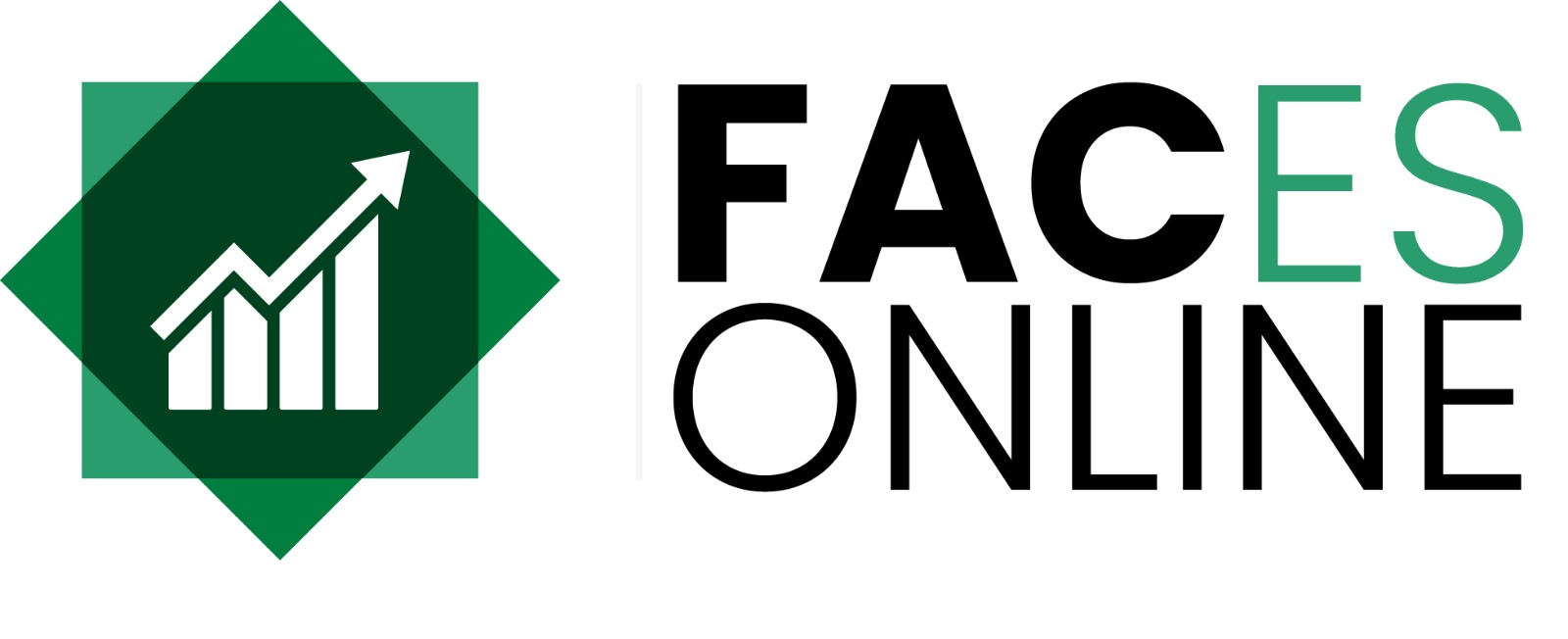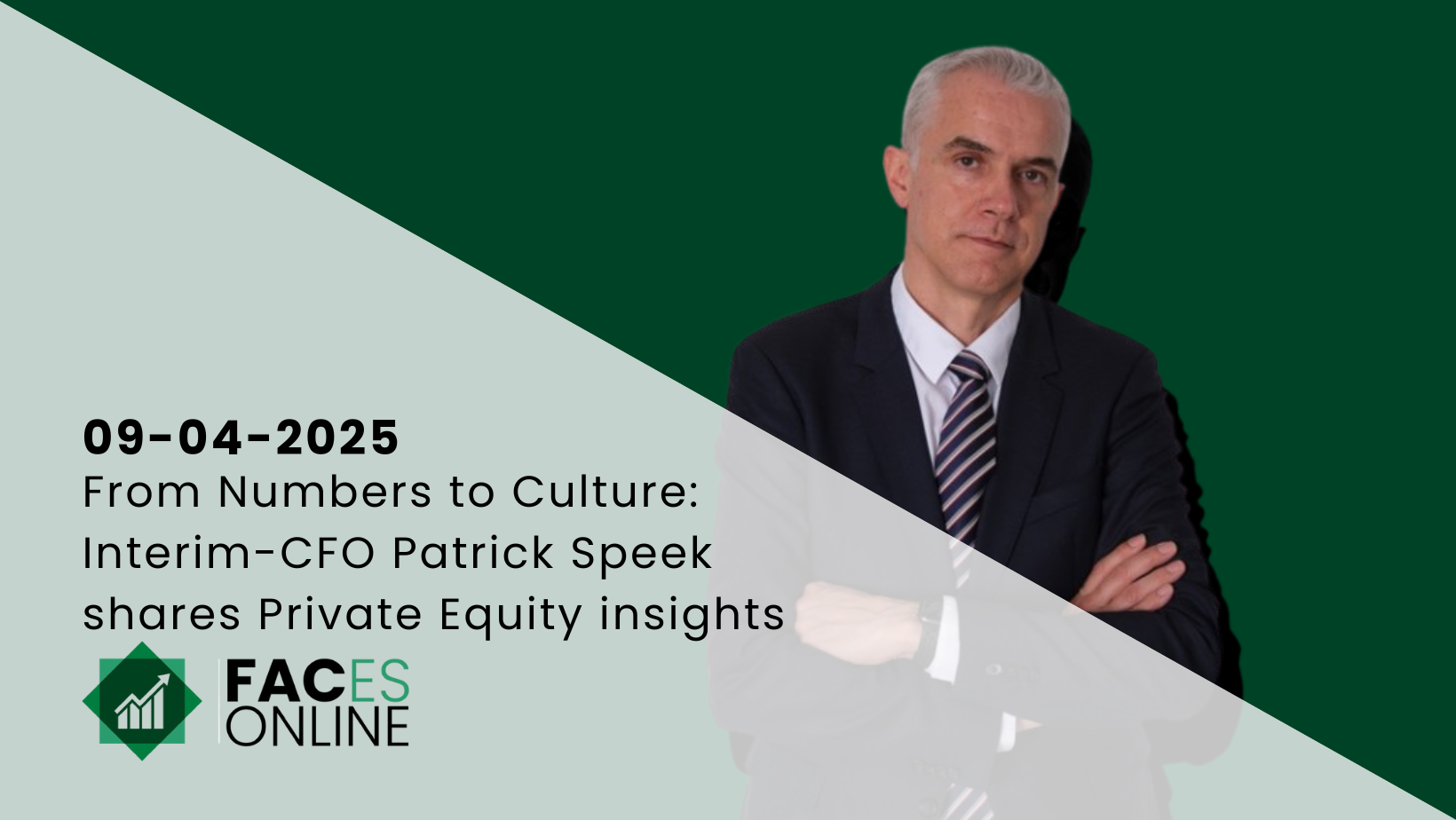In today’s financial world, success revolves around speed, precision, and the ability to understand complex corporate structures. In this interview, we speak with Patrick Speek, interim CFO, about improving business performance and all that it entails. His career, which began at the Dutch Tax and Customs Administration and led to top-level roles at multinationals like General Electric, forms the common thread of an inspiring and insightful story. This article takes you along the journey of a professional who strengthens and transforms companies not only with numbers, but especially through people and culture.
The Early Years: A Foundation of Knowledge and Ambition
Patrick’s career began with a degree in economics in Tilburg, after which he switched to NIVRA (now NBA) to train as a Chartered Accountant. Simultaneously, he followed intensive training at the Dutch Tax Authority to become a fiscal accountant. Patrick says: “It became clear early on that I had strong skills in financial analysis and that the combination of accountant and tax advisor created a unique position.” It was this combination of knowledge and talent that later enabled him to build a bridge between the rigid world of numbers and the dynamic nature of business.
A key turning point was his transition from the public to the private sector. “I had always been curious to explore the world beyond government. While the Tax Authority offered stability and solid training, I wanted more. I wanted to work in an international environment where not just the numbers, but also people and culture play a central role,” he says. This decision led him to companies like General Electric and Danaher, where he learned the intricacies of the profession in an international setting, and ultimately to private equity, where he could combine his analytical and human skills.
Private Equity
In the world of private equity, value creation is a dynamic and often risky game, largely because companies are burdened with high levels of debt. Patrick describes how companies are often acquired based on an analysis of the balance sheet, profit and loss statement, and cash flow. “But it’s not just about the income statement; the real insights certainly lie in the balance sheet and the cash position of a company. If you consistently see limited cash availability or a high debt load, you know structural problems can arise with even the slightest headwind in business,” he explains. The balance sheet and cash flow are very important, Patrick emphasizes. “It’s crucial to have a clear picture of an organization’s financial health. This enables investors and management teams to intervene before the situation worsens.”
In addition to financial analysis, he stresses the enormous impact of the human factor in this environment. “Without the right people and a culture that embraces and implements change, the numbers remain merely figures on paper. It is the human factor—effort, adaptability, willingness to collaborate, and speed of execution—that makes the difference,” Patrick says. These insights make it clear that successful private equity is not only about financial restructuring, but also about managing the emotional and cultural aspects within a company, which may have been different before the private equity firm took ownership. The need for change is driven by the higher debt burden and the narrower margin for errors or deviations in business results.
Integration Challenges: Balancing Change and Continuity
When companies are acquired, an integration process often begins that brings both opportunities and risks. Patrick explains that too rapid an integration, where major changes are made in the short term, can lead to the loss of key employees and customer relationships. He emphasizes the importance of first observing and listening: “Spend a week at the company, get to know the dynamics, and understand how people interact. Only then can you determine what really needs to change.” However, integration that is too slow can result in necessary changes—such as a stronger focus on cash—being delayed, pushing the company into financial trouble.
Patrick shares a specific case in which a company found itself in complete disarray following an acquisition. The management lacked sufficient insight into the existing culture and made drastic changes too quickly. This led to a loss of talent and ultimately a downward spiral in performance. The lesson is clear: integration is a critical process where balance between change and continuity is essential. Relationships within a company are a key part of this.
Interim Management: Short-Term Impact and Long-Term Vision
Successfully integrating a company requires a well-thought-out strategy that carefully aligns financial and operational aspects. It takes leadership willing to make tough decisions, but also capable of instilling a sense of urgency without unsettling employees. “Without that sense of urgency, people often remain stuck in familiar patterns, even when quick action is needed to steer the company away from trouble.” Interim management plays a unique role in this dynamic environment. Patrick states the following about the interim role: “As an interim CFO, you’re expected to act quickly and decisively, often within a timeframe of 6 to 12 months. This means making bold decisions and implementing changes in a short period. At the same time, the challenge is to lay the groundwork for sustainable long-term improvement so that the organization is in a better place after the interim CFO/management departs.”
We ask Patrick what the interim process looks like. He shares how, as interim CFO, he typically starts with a thorough financial analysis, diving deep into the balance sheet and cash flow. He also assesses the company’s Target Operating Model and evaluates how clearly it is understood by the rest of the management team. This includes an evaluation of the finance function. Patrick explains: “You often see that people in leadership teams work in silos within their own functions, and it’s the role of the CEO and CFO to connect them and align all functions in the same direction.” He then discusses his findings with the CEO and management team and presents a clear action plan. This plan often includes cost reduction, back-office restructuring (Finance, IT, HR, Procurement), optimizing operational processes, and clarifying the Target Operating Model. “Sometimes you need to make tough decisions, like closing factories or reducing headcount, to improve cash flow,” he says. Despite the disruptive nature of such decisions, he believes they are necessary to quickly turn around business performance.
Another key aspect of interim management is the importance of team building and building trust in a short period. Unlike permanent positions, where relationships develop over time, an interim manager must strike the right chord immediately. Primarily, this means engaging with both senior and junior staff to get a clear picture of the organizational culture and underlying issues. “I speak with everyone—from the most experienced managers to the newest employees—to understand why they work at the company and what their ambitions are.” Patrick adds: “Within fifteen minutes, you know why someone works where they do, and whether they’re happy. That says a lot about their contribution to the organization. By speaking with everyone, you get a complete picture and can better determine where training is needed or additional skills must be brought in.”
Financial Strategies: From Cash Flow to Capital Optimization
A key part of the story is how companies adjust their financial strategies to survive and grow. Patrick explains how he uses the balance sheet and other financial tools to assess a company’s health. Cash flow is central. “If you don’t generate enough cash, you have no breathing room to invest in growth or pay off expensive debt,” he stresses.
Beyond analyzing current figures, he discusses various strategies to improve the cash position and increase profitability (EBITDA improvement). These include selling assets to lighten the balance sheet, leasing instead of buying, and optimizing working capital—for instance, through factoring. These measures not only help a company survive but ensure it has the means to invest in improving operations. The goal is to achieve structural EBITDA improvement so that the company can ultimately generate enough profit to repay debt and reward investors. The challenge in this strategy is not just improving cash flow in the short term but also creating a sustainable financial structure in the long term. Here, the concept of “value creation” plays a critical role. Simply cutting costs is not enough; operations must be made more efficient and additional value must be created.
Cultural Integration: The Invisible Engine of Success
Alongside financial and operational factors, there is another, often less tangible element that determines the outcome of a deal: culture. Integrating two different company cultures can be extremely challenging. “Are you buying the staff, the knowledge, or just a location? You must answer that question clearly before making an investment or acquisition,” Patrick says.
He shares from experience that cultural differences can lead to failed integrations. He describes a deal in which a German company with a strict hierarchical structure was merged with an organization that valued flexibility and initiative. These differences caused friction and eventually led to the departure of key talent. “It’s a balancing act: you must respect the existing culture while also implementing necessary changes to realize synergy,” he explains. Patrick revisits his earlier point about sudden changes: “It’s essential not to implement all changes immediately in the early post-acquisition phase. Instead, it’s wise to first observe and listen. Learn how things are done day-to-day and understand what drives the people. Only then can you determine which changes are needed and how to implement them most effectively.”
Advice for Young Professionals and Students
Patrick also shares advice for those aspiring to a career in finance, private equity, or interim management. His main tip for young professionals is to start at a large firm. “You can’t go from small to big easily. Work first at reputable companies where you can learn from the best. Larger companies have a bigger talent pool and more senior professionals who can support and coach your career. At smaller firms, you might have more autonomy, but you often depend on just one or two senior people—and it’s uncertain whether they have the time or willingness to mentor you.”
He also emphasizes the importance of building a strong network and seeking mentorship. “It’s important to surround yourself with people who can coach and support you. These mentors help you build technical knowledge and also offer practical insights into the complex world of management and integration. That way, you don’t just learn the numbers—you learn how to motivate people and make the right decisions in difficult situations.”
Patrick advises against jumping too quickly into interim management. While the role of interim CFO or other financial interim positions can be attractive due to their variety, dynamic nature, and seemingly higher rewards, he believes it’s crucial to build a solid foundation first. “Experience is worth its weight in gold. Make sure you have a strong base to work from. That foundation is essential for succeeding later as an interim professional because it gives you the experience to better and more quickly assess situations,” Patrick emphasizes.
Another key point is the value of a broad education and the ability to be flexible in a rapidly changing market. Patrick notes that the world of finance is not only about math skills, but also about leadership and the ability to deal with different cultures and organizational structures. That’s what makes the role of (interim) CFO so challenging—and so rewarding.
















